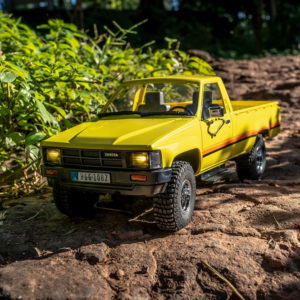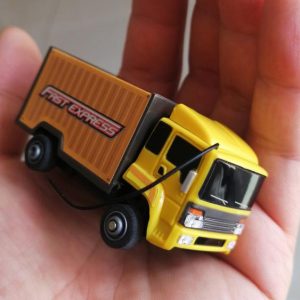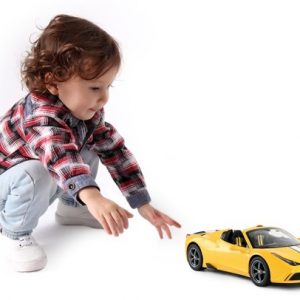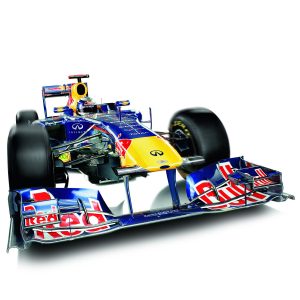Out of Print !!! De Agostini Red Bull Racing RB7 Gas Powered RC Nitro Engine BUILD IT YOURSELF. Deagostini Model Space 1:7-scale radio-controlled nitro model of Red Bull Racing’s championship-winning RB7. Kyosho Build and Drive your Own RC Scale Model of Sebastian Vettel’s Red Bull Racing RB7
4 in stock
$1,699.70 $1,699.80
4 in stock
Out of Print !!! De Agostini Red Bull Racing RB7 Gas Powered RC Nitro Engine BUILD IT YOURSELF. Deagostini Model Space 1:7-scale radio-controlled nitro model of Red Bull Racing’s championship-winning RB7. Kyosho Build and Drive your Own RC Scale Model of Sebastian Vettel’s Red Bull Racing RB7
Out of Print !!! Deagostini (Kyosho) great masterpiece, The De Agostini 1:7 scale NITRO ENGINE Formula 1: Red Bull Racing – RB7 (Build and Drive your Own RC Scale Model of Sebastian Vettel’s Red Bull Racing RB7) Although it has been discontinued for a long time. But Lucky for you, you still have one last chance to get it. We have a small amount of stock in our warehouse, and they are in good condition. In addition, we also have very little inventory of Deagostini (Kyosho) another masterpieces “DeAgostini Kyosho Hummer H1 Gas Powered RC Nitro Engine Car“
Please note: This is not ready to run RTR remote control car. It may take you a long time to assemble. And it’s a Gas Powered RC nitro car. Not a power with electricity remote control car.
Order includes all kits of “De Agostini 1:7 scale FORMULA ONE TEAM Red Bull Racing RB7 RC Nitro Engine Car” With 2.4G remote control and receiver.
No paper assembly manuals.
Electronic (PDF) address: De Agostini 1:7 scale FORMULA ONE TEAM Red Bull Racing RB7 RC Nitro Engine Car Step-by-step Assembly manual.
Step-by-step Assembly video: Official Red Bull Racing RB7 Build Diary
 |
 |
Specifications: KYOSHO-DeAGOSTINI Red Bull Racing RB7
| Scale | 1:7 | Engine | Kyosho GX21 |
| Length | 689mm | Engine capacity | 3.5cc |
| Width | 250mm | Fuel tank | approx. 95cc |
| Wheelbase | 452mm |
1:7-scale radio-controlled nitro model of Red Bull Racing’s championship-winning RB7 (Sophisticated design for optimal performance, Precision-engineered components, Top-quality components from Kyosho, Includes both a race body and a display body).
Step-by-step assembly
Even as a model-making novice, you can assemble this unique RC model of the Red Bull Racing RB7 2011 Formula 1 car. In 25 packs, we provide you with detailed, easyto-follow, step-by-step instructions and all the components you need to build your own radio-controlled Red Bull Racing RB7.
Unique driving experience
The high-performance nitro engine and the sophisticated, ultra-rigid chassis that you assemble yourself, along with the aerodynamic wings and bodywork, give you a world-class drive. Whether you‘re a beginner or an expert, you‘ll be amazed at how easy this model is to control!
Drive, brake and suspension:
• Rear-wheel drive
• Transmission via propshaft and bevelgear differential
• Disc brake
• Independent suspension
In terms of performance and quality, your model of the Red Bull Racing RB7 is in the same class as Sebastian Vettel’s 2011 F1 car. Your racer was manufactured exclusively for De Agostini by Kyosho, the leading manufacturer of remote-controlled vehicles, and developed under license from Red Bull. You can now build and race a 1:7-scale model of Sebastian Vettel’s 2011 racing car on the track!
Introductory articles
Along with the step-by-step assembly guides, your RB7 packs will include fascinating introductory articles packed with indepth information to help you understand the technology behind car racing, so you can get the most out of your RC Red Bull Racing RB7. With topics covering gear ratios, suspension, the engine, remote control and more, you will be fully equipped to run, maintain and tune your RC model to professional racestandard.
Powerful nitro engine for breathtaking performance
| Build The Red Bull RB7 Remote Controlled Car from ModelSpace Go online to https://good-goods-online.com/ to build and drive Sebastian Vettel’s Red Bull Racing RB7! This amazing 1:7 scale radio-controlled nitro model of Red Bull Racing’s championship-winning RB7 is available now! Sophisticated design for optimal performance, precision-engineered and top quality components from Kyosho together with De Agostini. |
|
| Freigang für den Deagostini RB7 Nachdem der Motor mehrfach eingelaufen und in Teillast eingefahren wurde, hier nun die erste freie Fahrt. |
|
| Motor einstellen am DeAgostini RedBull RB7 DeAGOSTINI Model Space/Kyosho Nitro RB7 Formula One RC car maiden run in windy day. Nitro RC fuel Torco 15% Air. Driver Sebastian Vettel of Germany’s 2011 Championship winning Renault Powered RedBull Racing RB7 1:7 Scale model. |
|
| Kyosho deagostini 1/7 red bull RB7 nitro modifications 1. Stiffening front and rear suspension arms by laminating with aluminum plates which is important as they flex under load. 2. Replaced front softer springs and longer piston arm or ball joint. Also replaced stronger cam arms and steel links as the stock plastic too soft. 3. Cut off the top section of rear suspension arms to mod the camber effect on the rear wheels (not shown as hidden by the wheels. 4. Most importantly, add weights upfront to create more weight bias to the front. 5. CG measured from rear wheel center approximately 220mm (measured from wheel center setup 231mm approximately) towards front with 100gm weight added w/o fuel. Now she can track straight with full throttle and turns nicely without spinouts easily. Avoid soft reds tires as were too soft and unstable. |
YOUR RED BULL RACING RB7 AT A GLANCE
MODERN TECHNOLOGY AND A RANGE OF TUNING OPTIONS MAKE THE RED BULL RACING RB7 RACING CAR A FASCINATING MODEL FOR BEGINNERS AND EXPERIENCED MODELLERS ALIKE.
Based on Kyosho’s proven technology, your 1:7-scale model Red Bull Racing RB7 delivers exciting motor racing action. With its rear-mounted engine powering the rear wheels – as on the full-sized original Red Bull Racing RB7 – its nimble handling and rapid acceleration promise an entertaining, authentic driving experience.
EASY ASSEMBLY
Assembling the model is simple and straightforward, even for inexperienced modellers. Simple step-by-step instructions take you through the assembly process in easy stages. Each component is illustrated for easy identification, and its installation is clearly explained. And with each pack, alongside the assembly guides, introductory articles will provide a wealth of in-depth background information about RC modelling. Fitting detailed display bodywork makes the Red Bull Racing RB7 model a very realistic representation of Sebastian Vettel’s car. An additional racing body is supplied for use on the track, so there is no need to risk damaging the display body when the car is in action.
THE ENGINE AND TRANSMISSION
This little car is a thoroughbred circuit racer, and with its 3.5cc nitro motor, it has enough power to challenge any of its competitors on the track. The Red Bull Racing RB7 is driven by the powerful Kyosho GX21 engine, which delivers 1.8 horsepower at the crank. Being a short-stroke design (with 16.6 x 16mm bore and stroke), it is free-revving, with an even spread of torque. The engine delivers great acceleration from standstill, as well as at higher speeds – enough to see off the stiffest competition. The car’s simple single-speed transmission saves having to make complex adjustments to ensure that the GX21 achieves its optimum performance on the track, and is driven by the engine through an automatic, centrifugal clutch. To ensure a long, trouble-free life, the transmission is made of tough high-performance plastic, while the engine’s twin ball bearings reduce wear, and its technically sophisticated, aerodynamic aluminium cylinder head provides excellent cooling. (The GX21 engine is designed to operate only with model fuels with a nitro content of 15-25%, and is not suitable for use with other fuels).
With its large fins (anodised red to prevent corrosion), the aerodynamically designed cylinder head ensures optimum cooling of the GX21 engine under all driving conditions. The handle of the recoil starter can be seen on the right, in front of the cylinder head.
THE CHASSIS
The centrepiece of the Red Bull Racing RB7 model – its race-proven chassis – provides numerous adjustments so that the performance of the car can be precisely matched to a specific track or the personal preferences of the driver. For example, the ride height can be adapted to suit the individual characteristics of different race circuits. The car has four hydraulic dampers – and, in a similar way to a full-size Formula 1 car, the front ones are installed horizontally, operating via pushrods that link them to the suspension wishbones. Together with the stiff, well-balanced chassis and the grippy tyres, this gives your Red Bull Racing RB7 optimum stability when cornering. Even under the fastest acceleration, the large 90 x 52mm rear tyres deliver the traction of the GX21 engine to the track, while smaller 90 x 45mm front tyres handle the steering. Along with the rear-wheel drive system, this set-up allows hot burnouts and fast drifts that would not be possible with four-wheel drive cars, providing an ‘authentic’ Formula 1 feel, and long-lasting driving pleasure on the circuit. The all-important ability to decelerate is provided by a powerful central disc brake built into the drive train, which slows down the two rear wheels of the car.
THE BODYWORK
The 1:7-scale Red Bull Racing RB7 racer is an impressive 689 x 250 x 150mm with its bodywork fitted. During the course of the series, you’ll be building a ‘showcase display’ body that is an authentic miniature of Sebastian Vettel’s Red Bull Racing RB7, down to the smallest detail. This includes the prominent Red Bull and sponsors’ logos, which are exact replicas of the originals, supplied in the form of self-adhesive decals. You have received the first components for the display body with this pack, and on page 5, you can start to assemble some of the elements that go together to make up the front wing – one of the most important aerodynamic elements of the full-size car. When the display body is complete, it will make the model a star in any showcase – but you naturally won’t want to submit it to the rigours of the racetrack, and possible damage. So, in addition to the display bodywork, towards the end of the series you will be provided with a second, robust racing body to fit your model. This is also a detailed replica of the body of Vettel’s car, but has been specially designed for use on the racetrack, so that it will survive minor racing incidents without damage. In particular, while the wings and other external aerodynamics of the racing body are still very much the same as that of the full-size Red Bull Racing RB7, they are made a little more robust for racing purposes. The racing body can be swapped for the display body and fitted in just a few simple steps. Then, even if the car is involved in a major collision, or swerves off the track, the tough bodywork and strong chassis should prevent the model from suffering any serious damage.
THE REMOTE CONTROL SYSTEM
Your model Red Bull Racing RB7 is designed to work with a Kyosho Syncro digital remote control system. This has a handset that sends out signal pulses to operate the model’s steering, throttle and brake, via a radio that operates in the 2.4GHz band, transmitting through an integrated antenna. Unlike an analogue system, a digital remote control requires no special tuning and after switching on, the handset will link up with the model by means of a coded ‘handshake’ signal that prevents any interference with other RC systems.
The driving controls are mounted on a pistol grip, which is more comfortable to use than a simple joystick. The trigger on the grip controls the car’s acceleration and deceleration, while a ‘steering wheel’ on the side makes the model turn. Other features of the
handset include a servo reverse, and an LED display that indicates the charge of the four batteries housed in a compartment underneath. The sophisticated technology of the Kyosho Syncro remote control device means that it is even possible to use it to operate several
different vehicles. The digital system that enables this is available as an accessory.
During the course of the collection, you will have the opportunity to acquire a superb 2.4GHz radio control system, including a receiver. If you already have a suitable remote control system, however, you will be able to use it to operate your Red Bull Racing RB7.
MODERN ELECTRONICS
The radio signals from the remote control handset are picked up by an RC receiver unit located in the radio box on the chassis of your Red Bull Racing RB7 racing car, on the left of the engine. The receiver unit converts the radio signals into electrical pulses and passes them on to the car’s control servos, which operate the throttle, brake and steering. The servos have a very compact design, and are tough enough to withstand the forces of acceleration or deceleration acting on them.
The model’s steering servo can be seen on the right of the picture, mounted behind the front suspension dampers – which are installed horizontally and operated by pushrods.
ON THE TRACK
After you have completed your racing car, it is ready to be started for the first time. Later in the series, this section of the pack will tell you everything you need to know about preparing your model Red Bull Racing RB7 for its first run under power, and how to adjust the car and its engine to achieve the best possible performance. You will also find detailed information on using many other features of the model, such as how to tailor the chassis specifically for the particular track on which you are racing.
Formula 1: Red Bull Racing – RB7 to RB12
Racing RC cars is an awesome pastime, from building and enhancing your car to taking on friends in highly competitive races. With our Red Bull RB7 1:7 scale model you can construct and race a detailed replica of Sebastian Vettel’s 2011 Formula 1 Championship winning car. But do you know what made the car so incredible, and how have Red Bull’s cars evolved to reach 2016’s RB12? Read on to discover the evolution of Red Bull Racing.
Image of the ModelSpace 1:7 scale model Red Bull RB7 Formula 1 racing car, as part of a blog about the evolution of Team Red Bull Racing’s F1 cars from RB7 to RB12
Rise of the RB7
In 2010, Red Bull Racing claimed its first ever World Constructors’ Championship win, with Sebastian Vettel also claiming his first Drivers’ Championship behind the wheel of the excellent RB6. This hard-fought success set the tone for the team, but with a raft of new regulations enforced for 2011, a natural evolution had to occur.
The team secured a Renault RS27 engine, as well as a new kinetic energy recovery system (KERS) – another reintroduction to the Formula 1 regulations. A ban on double-deck diffusers also presented an opportunity for Red Bull to utilise the pull rod rear suspension they first introduced in the 2009 season. Despite the KERS being a touch unreliable, the RB7 proved to be a very special car.
Close up image of the ModelSpace 1:7 scale model Red Bull RB7 Formula 1 racing car, as part of a blog about the evolution of Team Red Bull Racing’s F1 cars from RB7 to RB12
Total Team Dominance
Before 2011, Sebastian Vettel had already proven his incredible Formula 1 racing pedigree – finishing the 2009 season as the youngest World Drivers’ Championship runner-up, and becoming the youngest ever driver to win the Championship in 2010 at only 23 years old. But 2011 was when he truly stamped his greatness on F1, defending his title in dominant fashion behind the wheels of the powerful Red Bull RB7.
Combining with Australian teammate Mark Webber, the RB7 missed the top five only twice and claimed all but one pole position, finishing with a superb 12 wins of 19 races.
A Messy Championship
As clean-cut as Red Bull’s success was in 2011, the 2012 season was a muddy affair, which threatened to derail the team’s title defences at every turn. The RB8 featured a stepped-nose to meet imposed safety regulations, like many of the other cars, but other adjustments drew criticism and questions of legality throughout the season.
At the season midpoint, Red Bull was right in the thick of a tight battle to reclaim both its titles
During the German GP, the team was referred to race stewards by FIA Technical Delegate Jo Bauer, who had concerns over a possibly illegal throttle map. In 2011, F1 teams were able to program their engines to push more air through the exhaust and across the diffuser, thus increasing downforce. Regulation changes saw a ban of this practice in 2012, but Red Bull Racing was suspected of abusing this. Although they were cleared by the race stewards, this was one of a few complaints the team was forced to handle.
At the season midpoint, Red Bull was right in the thick of a tight battle to reclaim both its titles, but some more breath taking driving from their wunderkind Vettel saw them clinch both titles for the third year in a row.
Red Bull recently set up a fun challenge between two RB7’s and an RB8, check out the video below:
Broken Records
The 2013 season started much like 2012, with the RB9 proving to be a very capable vehicle without truly blowing away the competition. Once again Sebastian Vettel and the team clung onto tight leads halfway through the season, but this was no time to panic. The German maestro tore apart the record books to claim nine wins from the final nine races, making it an unprecedented four years in a row for him and the Red Bull team.
Changing of the Guard
2014 saw the first major change for the team in a long time, with Mark Webber’s retirement opening the door for Australian Red Bull Junior Programme graduate, Daniel Ricciardo. Having flown so high for so long, Vettel struggled all season – a second place in the Singapore GP his best result. Conversely, Ricciardo didn’t waste his promotion, scoring three wins in the RB10 and finishing third in the Drivers’ Championship.
Red Bull was quick to promote the young Russian Daniil Kvyat, whose debut F1 season at Toro Rosso had everyone talking
Red Bull Racing finished second in the World Constructors’ Championship Mercedes, with Vettel choosing to part ways with the team. Red Bull was quick to promote the young Russian Daniil Kvyat, whose debut F1 season at Toro Rosso had everyone talking.
A Forgettable Year
It’s safe to say that 2015 just wasn’t Red Bull’s year, with the writing on the wall early on. Four races in, the new combo of Ricciardo and Kvyat only managed a total of 23 points – the team’s worst start in a long time. The RB11’s poor power unit performance and reliability continued to hamper both drivers, resulting in Red Bull failing to secure a win for the first time since 2008. The result was a fourth place finish for the team, and a lot of room for improvement.
Signs of Improvement
2016 has seen the birth of the RB12, and with it hopes of a return to form for Red Bull Racing. Daniil Kvyat showed good form at the Chinese Grand Prix to claim third, but he was dropped from the team following an error during the Russian GP, which forced Ferrari driver Sebastian Vettel to retire.
Kvyat’s demotion saw the introduction of eighteen-year-old Belgian-Dutch driver Max Verstappen, who wasted no time in securing his place in the team with a stunning first place debut at the Spanish GP.
It’s impossible to say when Red Bull Racing will claim their next Championship, but with an impressive legacy of winning and a strong pool of talented engineers and drivers, you’d argue that it’s only a matter of time. While we wait for that, here’s a great video of the DeAgostini ModelSpace Red Bull RB7 in action:
| Vettel drives his Red Bull F1 car on the NÜRBURGRING! EPIC V8 EXHAUST SOUNDS! +Niki Lauda Ferrari F1 During the Red Bull Formula Nürburgring event, Sebastian Vettel and David Coulthard drove a Red Bull Racing RB7 and RB8 formula 1 car on the Nürburgring Nordschleife! Also in this video, Niki Lauda’s Ferrari Make sure to put your SOUND ON to hear these lovely V8’s roar! |
|
| Redbull let Sebastian Vettel drive his 2011 RB7 around the Nurburgring Nordschleife | Track Footage | |
| Onboard of Sebastian Vettel driving his Redbull RB7 around Nurburgring Nordschleife | |
| Feel the noise: F1 Red Bull RB7 attacks Bathurst | LIQUI MOLY Bathurst 12 Hour 2023 The Bathurst 12 Hour, currently known as the Liqui Moly Bathurst 12 Hour, is an endurance race for GT and production cars held at the Mount Panorama Circuit, in Bathurst, Australia. It is an annual race, taking place every February. The race was first held in 1991 for Series Production cars and moved to Sydney’s Eastern Creek Raceway in 1995 before being discontinued. The race was revived in 2007, again for production cars, before adding a new class for GT3 and other GT cars in 2011. This has led to unprecedented domestic and international exposure for the event. In all, eighteen races have taken place; seventeen at Mount Panorama and one at Eastern Creek Raceway. |
| Weight | 13 kg |
|---|---|
| Dimensions | 23 × 5 × 1000 cm |
| brand | De Agostini & Kyosho |
| model | 1:7-scale radio-controlled nitro model of Red Bull Racing’s championship-winning RB7 |
| Scale | 1/7 |
| Materials | Moulded plastic and metal |
| Finished Dimensions | L 689mm, W 250mm, H 154mm |
| Difficulty Rating | 5 |






There are no reviews yet.